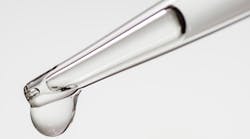The American Petroleum Institute (API) has been licensing DEF (diesel exhaust fluid) since 2009, and despite its longtime existence, DEF continues to cause some issues for fleets.
“DEF is highly sensitive to impurities and contamination such as chemicals, coolants, engine oil, and water,” said Cornelius Jones, regional technical expert for transportation at Shell Lubricants, a company which produces diesel exhaust fluid, along with engine oils and other lubricants. “DEF is also corrosive to certain metals such as steel, iron, zinc, nickel, copper, aluminum, and magnesium.”
As Jones pointed out, DEF contamination can occur during any of the following:
- Accidentally mixing DEF with diesel fuel
- Not using a DEF-dedicated pump, hose, and nozzle
- Not using a DEF-dedicated storage container
- Using a container made of one of the above-mentioned metals
“DEF is manufactured from an automotive/medicinal grade of urea dissolved in deionized water,” explained Jay Gagnon, senior product manager for BlueDEF diesel exhaust fluid and dispensing equipment at Old World Industries. “The solution must contain 32.5% urea and 67.5% water.”
That sounds relatively simple, but there is more complexity to DEF than those two basic ingredients. And with complexity comes more opportunity for human error.
“The standard behind DEF is a ‘purity’ spec,” said Jeffrey Harmening, a manager with the API whose areas of responsibility include engine oil and DEF. “There is actually a lot more to DEF than just urea concentration. There are roughly 15 other physical and chemical properties that are essential to maintaining DEF quality.”
Problems when purity is compromised
The bottom line is that technicians and drivers should pay close attention to DEF purity. If the purity level doesn’t meet the proper specification (ISO 22241), Harmening said a fleet could run into issues like deposit formation, corrosion, catalyst blockage, and injector or filter clogging, which will affect dosage rates. When dosage rates are affected, the aftertreatment system’s ability to reduce NOx is impeded and sensors may trip. All of this can lead to increased downtime and costly repairs.
One sign of potential DEF contamination is poor engine performance. A fault code can also light up the malfunction indicator lamp. In extreme cases, the engine will go into a derate mode. “Then the fleet may have to send the vehicle into a dealer for the DEF system to be cleaned,” Gagnon said. “Worst case, replacement of expensive system components may even be necessary.”
Catalyst fouling is another possible byproduct of dirty DEF. Deposit buildup has long been a challenge with many DEF products. For fleets capitalizing on the growth in last-mile delivery, that challenge has only become greater.
“In sub-optimal operating conditions, deposit formation can negatively impact exhaust system durability by the formation of solids (cyanuric acid or ammelide) on the exhaust wall, thus degrading performance of the SCR catalyst,” Gagnon explained. “These deposits can also increase backpressure which can decrease fuel economy and reduce engine power. Low-speed operation, extended idling, and frequent stop-and-go operation all prevent the exhaust system from reaching and maintaining optimum operating temperatures. That contributes to deposit buildup in the SCR system.”
Tips for fleets to preserve DEF purity
Even when DEF has been manufactured to the highest standards, contamination can still occur. Gagnon explained that incorrect storage, handling, and dispensing practices are the largest contributors to DEF contamination.
First of all, there is a simple way for fleets to feel confident in the DEF they are purchasing.
“Since the composition of DEF is strictly controlled by ISO 22241, and in North America each manufacturer’s fluid is certified by the API, packaging for DEF should carry both the ISO artwork and API logo to verify that it has been manufactured correctly and in the right formulation,” Gagnon explained.
Fleets could also look for additional assurances. BlueDEF products, for example, also feature a batch code number printed on the package. “Our batch code is a fleet’s assurance that the DEF is pure and has been tested to meet or exceed the strictest OEM standards,” Gagnon said.
Similarly, DEF shipping containers such as drums and totes are coded with the manufacture date. “A fleet should make sure its drivers, technicians, and other personnel are familiar with how to understand the date code,” Shell’s Jones said. That’s because DEF has a specific shelf life that can be significantly impacted by several factors.
When storing DEF in an environment that is 86°F, useful life is reduced to 12 months. Storing in even hotter temperatures further reduces the useful life. Conversely, storing DEF in temperatures of 50°F or lower can extend useful life to roughly 36 months. When storing at room temperature, or roughly 77°F, shelf life is about 18 months.
For a fleet that is stocking its own DEF, it’s important to think about where and how that DEF is being stored, as well as how long it takes the fleet to consume it. Three years is an unusually long time to stock something as common as DEF. On the other hand, six to 12 months might creep up rather quickly. A fleet should gain an understanding of its DEF consumption rate and adjust its stocking level accordingly.
That said, the manner in which DEF is stored presents the most risk, according to the API’s Harmening. A fleet should have a clear understanding of the ambient temperature of the environment the DEF is being stored in. It is never recommended to store DEF outside unless it is in some kind of temperature-controlled container or underground storage tank. Indoor storage at room temperature is typically recommended.
“Most shops I’ve been in are way above room temperature,” Harmening related. “If you’re located in a warmer part of the country where you might be storing DEF in a shop that’s above 95°F, shelf life might be reduced to as little as six months. At that point, the ISO standard recommends that you actually test the DEF before using it. All of this is dependent on high temperatures.”
Sunlight plays a factor, too. When subjected to direct sunlight and/or high temperatures, the water in the DEF can end up evaporating. That causes the urea concentration to increase. It also changes the alkalinity level which is one of the monitored properties of onboard diagnostics. “The DEF could undergo some changes that the OBD might pick up, causing sensors to go off and maybe even forcing an engine into derate mode,” Harmening said. “Essentially, that could require a technician to change out the DEF.”
In addition to storing DEF at the right temperature, it’s also important for fleets to ensure that contaminants can’t enter the DEF supply. Harmening said fleets should use enclosed systems that are reliable such as a quality DEF tote or IBC (intermediate bulk container).
“This becomes very critical because shops tend to be dirty places,” Harmening said. “There are numerous opportunities for dirt and debris to get into the DEF, and one of those 15 important properties is insoluble matter. That’s what can cause problems by clogging the injectors or filters once it gets into the system.”
BlueDEF’s Gagnon said fleets should put standard processes in place to ensure that all dispensing nozzles, tanks, and equipment are kept clean and protected to avoid the infiltration of contaminants. Awareness should also be heightened when filling the DEF tank from a smaller container using a funnel.
“Dirt, grease, or fluids previously poured through that funnel can contaminate the DEF,” Shell’s Jones said. “Additionally, the DEF fill opening should be kept as clean as possible to prevent possible contamination when a DEF nozzle or funnel is inserted.”
For a fleet that has its drivers refill DEF on the road, control over product quality is somewhat relinquished. But Harmening said there are still some best practices fleets can follow.
“Certain states adopt regulations that require people selling DEF to report the manufacturer and brand name to the end-user,” Harmening explained. “In addition, sellers may be required to report certain assurances that the DEF meets the ISO 22241 specification. Savvy drivers can always ask the cashier at the gas station for that information if it isn’t printed on the receipt. It’s an even better idea to ask that question before filling up.”
For those drivers who carry DEF with them in the truck, Harmening said there are also some rules of thumb to follow. First of all, a driver can look for a product with the API stamp of approval. Secondly, look for an expiration date. If one doesn’t exist, look at the traceability code for a date. “That date is usually equivalent to the packaging date,” Harmening pointed out.
Drivers should also be careful about storing a jug of DEF in their trucks. If a truck is parked out in the sun for long periods of time, ambient temperature can climb rapidly and the useful life of the DEF can be reduced considerably, likely down to that six-month mark.
When topping off the DEF tank, Jones said a driver should look for a brown film layer on top of the DEF. That indicates contamination. “Do not start the engine until the tank can be drained and refilled,” Jones warned.
A little more complex practice is the utilization of a refractometer. Designed to measure the concentration of water-soluble fluids, a refractometer can help technicians or drivers check the purity of the DEF they are using.
Regardless of what types of standard processes are put in place to preserve DEF purity, Jones said everything ties back to the overarching best practice. “A commitment to meeting the ISO 22241 standard 100% of the time is very important,” Jones said.




